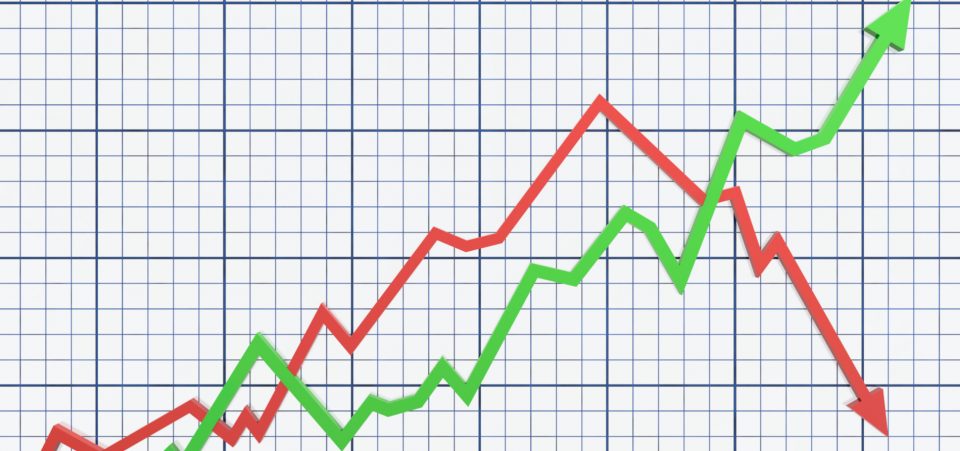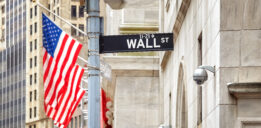A Debt Bomb Threatens to Send the U.S. Economy Back to 2008
There is a strange optimism about the U.S. economy. The optimism has come in the form of a sell-off of U.S. government bonds, known as Treasuries. That, in turn, has pushed their market rate to a seven-year high.
Analysts and investors are pleased with the employment and salary numbers. The numbers haven’t been this good since at least 20 years ago at the peak of the dotcom bubble.
But here’s where this gets strange. In 2007-2008, the U.S. economy, which was also at the crest of a bullish wave, imploded because of too much debt.
Debt Has Only Skyrocketed to Another Galaxy Since Then
It’s a sign of the general and misplaced rapture over the financial markets and the economy that the tenth anniversary of Lehman Brothers Holdings Inc.’s collapse (September 15, 2008) came and went with little notice.
And this level of debt, combined with the Federal Reserve’s inevitable increase in interest rates should have encouraged gloom rather than cause the current exuberance to become even more “irrationally exuberant.”
Lehman Brothers imploded and brought down the rest of the U.S. economy with it. In fact, that event was the opening ceremony for what would be the biggest financial crisis in history.
The U.S. Economy Is Heading for an Even Bigger Crash Than 2008
The way stocks are flying on Wall Street, chances are that few have even bothered to learn from that all-but-forgotten episode.
It’s unfortunate because the next global crisis will be bigger and has already started to produce plenty of signs and mechanisms.
All it takes is a glimpse with a more critical eye at the present economic reality.
Those who are willing to engage in some reflection of the cold and calculating kind—there’s no need for negativity—might find the means to survive the next financial flood.
This is not pessimism. It is necessary to have the clarity to understand what is happening and the desire not to repeat the same errors of omission of the past.
Perhaps the most critical, if overlooked, sign of the inevitable crisis that’s about to hit the U.S. economy is debt.
As with all major financial crash episodes and the crises they bring, there’s no way to predict the day or even the month they strike.
We Remember October 28, 1929 and September 15, 2008
Just as in the case of conflicts, such as World War 1, the trigger mechanism (in that case, the assassination of an Austrian archduke in an Austrian colony) is the hidden factor operating amid a very visible mountain of risk.
In the case of WW1, tensions had been brewing for decades as Britain and France, at the height of their imperial might, grew increasingly wary of Germany’s emerging industrial might and powerful naval fleet.
Everyone knew something could—or would—happen. It was just a matter of time.
Archduke Ferdinand was just the match that lit the pyre. The modern term for such a match is a “black swan” event.
In present financial terms, the pile of debt is the pyre and the list of possible matches grows daily.
It could come in the form of President Donald Trump failing to reserve a bench seat for his Supreme Court nominee Judge Brett Kavanaugh. Or it could be a spike in oil prices. Or it could be the Chinese government retaliating to U.S. tariffs, selling off their dollar holdings. Or it could be a new war in the Middle East (Iran seems more probable than possible).
Any One of These Could Detonate the Nuclear Debt Bomb
The United States would take the biggest hit, given that U.S. national debt has more than doubled in a mere decade.
U.S. national debt has surpassed $21.0 trillion. Given Trump’s tax cuts (which corporations have largely used to buy back their own stocks), it could cause a sharp slowdown in the current economic recovery.
The Congressional Budget Office (CBO) warned that in 2018 alone, Washington could pay $390.0 billion…just to pay the interest on the national debt. It is estimated that in a decade, this annual fee could be $900.0 billion, exceeding the huge military budget. (Source: “As Debt Rises, the Government Will Soon Spend More on Interest Than on the Military,” The New York Times, September 25, 2018.)
And it’s not just the U.S. government debt, which has now hit some 105%. It’s global aggregate debt, which reached $247.0 trillion. (Source: “The biggest red flag for the next recession? Corporate debt to cash ratios, top economist says,” CNBC, September 12, 2018.)
That figure alone would be almost meaningless if I did not point out that in 2008, on the eve of the Lehman Brothers disaster, the global debt was about $177.0 trillion.
Whereas the last crisis was largely caused by banks playing games with derivatives based on toxic mortgages, it was household debt (accumulated through credit cards and the like) that has driven the debt accumulation of the post-Lehman Brothers decade.
It’s not that families became more frivolous. They accumulated debt to compensate for lower—often lost—incomes to live semi-normal lives.
Be Afraid of U.S. Debt
If U.S. public debt has not scared you yet, consider that U.S. families have amassed well over $13.0 trillion in debt—and once again, mortgages (this time of the normal “prime” variety) take up some $9.0 trillion of it. That’s more than in 2008.
In some areas, debt has almost tripled. Student loan debt has gone from $611.0 billion in 2008 to $1.5 trillion now.
And car buyers, who have taken up the practice of borrowing from independent car loan brokers, have accumulated some $1.25 trillion. (Source: “Student loan debt just hit $1.5 trillion. Women hold most of it,” CNN, June 5, 2018.)
If that fails to raise concerns, consider that the subprime mortgage powered crisis of 2008 was worth $1.3 trillion.
And none of these figures include credit card debt. If any single one of these debt “classes” explodes, it would be impossible to contain their effects on the overall U.S. economy.
The stock market setting new records every week amid reports of a buoyant U.S. economy—or one presented as such—is only increasing the odds of the debt bomb exploding.
The stock market has blown the current bubble out of thin air alone. The Federal Reserve has applied near-zero nominal interest rates for almost a decade. The effect has been to channel an enormous liquidity into the stock market.
Of course, if the Federal Reserve could perpetuate the zero-interest flow of funds like some sort of perpetuum mobile machine, investors would have reason to celebrate.
Quantitative Easing Has Come And Gone
Rather, it’s the quantitative easing (QE) approach that has fueled the longest bull market in recent memory.
Now, the Federal Reserve has no choice but to change course and raise interest rates.
Ironically, it’s the fact that 10-year Treasuries are returning more than 3.2%—the highest yield since July 2011—and that employment numbers are so good that Fed Chair Jerome Powell will have no choice but to lift rates.
That move could set off a financial tsunami.
The Fed’s concern is inflationary pressure. But any inflation that may result from higher employment will also have to consider the oil price’s not-so-negligible contribution.
While no two crises are the same, the combination of danger factors, from bond yields and employment figures to debt levels and high oil prices (the oil price achieved an all-time record high in the summer of 2008), is an eerie reminder of the period immediately preceding the collapse of Lehman Brothers.
Cynics may be forgiven for thinking that the Fed has become so eager to lift interest rates such that when—rather than “if”—the markets blow up, it will have a lever to pull to try to keep the economy floating: lower interest rates.
Alas, the world’s richest central banks, from the Fed to the European Central Bank or the Bank of England, have depleted their ability to buy bonds to keep rates low.
The time and funds for quantitative easing have come and gone. The next crisis could send the U.S. economy and Wall Street all the way back to September 2008.






